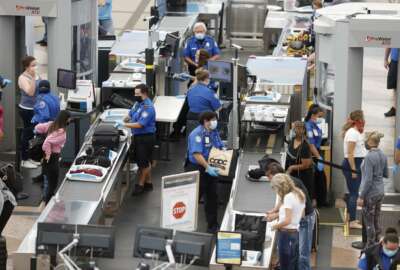By Emily Kopp
Reporter
Federal News Radio
The struggling Postal Service is going forward with a plan to trim its processing centers by half to save up to $3 billion a year, even though the proposal would require job losses and reduced services.
It is studying 252 mail processing centers for closure. The agency says 35,000 jobs would be cut but all of the more than 150,000 mail processing employees would be impacted. As a result, the agency would no longer deliver first-class mail within one day. The new service standard would be two to three days.
The steps are part of a broad effort to cut costs for the agency that lost $8.5 billion last year and is facing ever more red ink this year as the Internet siphons off first-class mail and the stagnant economy holds down the growth of advertising mail. Over the last five years mail volume has shrunk by more than a quarter.
“We are radically realigning the way we process and deliver the mail,” said Postmaster General Patrick Donahoe. “With the dramatic decline in mail volume and the resulting excess capacity, maintaining a vast national infrastructure is no longer realistic.”
Chief operating officer Meg Brennan said she hoped the job cuts would be through attrition.
“This is about the long-term viability of the organization but we certainly want to make sure that we work with the unions as we’ve done, and we’ve done that successfully in terms of repositioning employees,” she said. “The challenge is that it’s an accelerated time line. We need to bend this cost curve, and quick.”
The agency hopes to close the processing facilities by 2013.
But unions are not supporting the initiative.
“The mail processing network is a major asset,” said American Postal Workers Union president Cliff Guffey. “Degrading service is not the answer to the Postal Service’s problems.” The National Association of Postal Supervisors is telling lawmakers that the plan will undermine public support for the postal system and create a “death spiral.”
The cuts are part of a $20 billion savings plan. The Postal Service could save up to $6.5 billion by enacting systemic changes like the proposed facility closures, shutting up to 3,700 post offices and revising mail delivery routes. But it needs Congress’ help to realize the majority of savings.
Donahoe said today’s announcement should tell Congress that the Postal Service is doing what it can to fix its own problems.
“I’m not going to let this organization drown in red ink and I’m not going to be in a situation where I’m standing there expecting someone else to take care of our issues for us,” he said. “We know what we have to do and there are certain things we’ll take on ourselves. There are other things we need Congress’ help with.”
He seeks new laws that would let it recover some of the money that it has prepaid to employee retirement funds, reduce mail delivery from six to five days, take its employees out of federal benefits systems and create its own, and lay off 120,000 employees now protected by union contracts. Donahoe said he hopes to have a workforce of 425,000, or two thirds of its current size, by 2015.
Donahoe told the Senate Homeland Security and Governmental Affairs Committee two weeks ago that without Congressional action, the Postal Service would have a week’s worth of cash by the end of October, and would have to suspend mail delivery by this time next year. In addition, it told the committee that it would default on a $5.5 billion payment for future retiree benefits due Sept. 30.
Lawmakers are wary of the impact facility closures could have on their districts, and expressed skepticism at the plan’s savings.
“This processing facility consolidation proposal cannot forestall the Postal Service’s financial collapse by itself,” said Rep. Darrell Issa (R-Calif.), chairman of the House oversight committee. “Even with this announcement, the Postal Service is still asking for a multi-billion dollar taxpayer funded bailout.” Legislation moving through the House would give the Postal Service more time to make that payment.
In addition, Issa and Sens. Tom Carper (D-Del.) and Susan Collins (R-Maine) have sponsored postal reform legislation. While no markup has been scheduled, a spokesperson for Homeland Security and Governmental Affairs Committee chairman Sen. Joe Lieberman (I-Conn.) said he would hold one this fall, most likely in October.
The Postal Service will discuss its plans to shutter processing centers with affected communities and commercial customers over the next three months. Officials said that could have some impact on commercial mailers but individual customers are not likely to notice the change. USPS promised to work with businesses to help solve any problems the change might cause.
Last year the Postal Service had revenue of $67 billion and expenses of $75 billion.
“Cutting costs is essential to saving the Postal Service and the 8 million private sector workers whose jobs rely on it,” said Art Sackler, coordinator of the Coalition for a 21st Century Postal Service, an industry trade group. “The Coalition welcomes this important step and looks forward to the details. But what’s needed even more are fundamental reforms only Congress can make.”
The Associated Press contributed to this report
(Copyright 2011 by Federal News Radio. All Rights Reserved.)
Copyright
© 2024 Federal News Network. All rights reserved. This website is not intended for users located within the European Economic Area.




